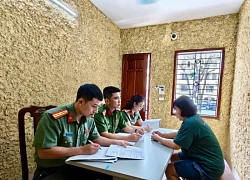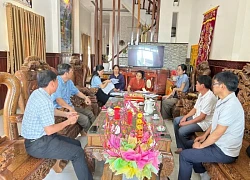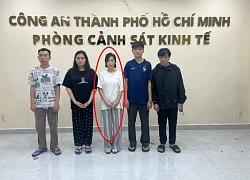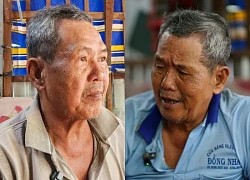The cost of completion of Cau Pagoda caused a stir, fans criticized it for "losing value" after restoration
Faced with the opinion that after the restoration, Cau Pagoda became strange because the paint color was too new and modern, the Chairman of Hoi An City People's Committee directed adjustments.
On the morning of July 29, responding to the press, Mr. Nguyen Van Son - Chairman of the People's Committee of Hoi An City, Quang Nam Province - said that he was assigning the Hoi An Cultural Heritage Management and Conservation Center to re-color the Pagoda relics. Bridge.
According to Mr. Son, after receiving opinions from residents and tourists, the city decided to instruct the unit carrying out the restoration of Covered Bridge, the Hoi An Cultural Heritage Management and Conservation Center, to reprocess the color lighter. The front and back of the Covered Bridge will be red, while the side will be repainted a darker color than the current white.
As reported by the press, from July 25, the construction unit dismantled the entire house covered with iron frames and corrugated iron roofs, so residents and tourists can easily admire the panoramic view of the Cau Pagoda relic after 1.5 hours. year of restoration.
The new look of Cau Pagoda after the major restoration received many mixed opinions from public opinion. Many people believe that the restoration, especially the paint color, has lost the ancient beauty of the building, considered a symbol of the ancient town of Hoi An, making the monument strange compared to before. .
Mr. Pham Phu Ngoc - Director of Hoi An Cultural Heritage Management and Conservation Center - affirmed that the restoration has the principles of restoration, especially the color of the monument. According to Mr. Ngoc, the current wall or tile color is based on the original color of the Covered Bridge for restoration.
"The color before the restoration was the color of nearly 20 years of fading over time and had not been painted. Now we see it darker because of the original color. This is whitewashing, not lime paint, so according to "It will fade very quickly. On August 3, we will publish a book recording all the research and restoration process for everyone to understand," Mr. Ngoc analyzed.
The project to renovate the Cau Pagoda relic has a total investment of more than 20.2 billion VND, of which Quang Nam province budget supports 50%, Hoi An city budget arranges 50%. The project is invested by Hoi An City People's Committee, implemented by Hoi An Cultural Heritage Management and Conservation Center, and the Center for Relics Conservation Consulting - Institute for Relics Conservation is the consulting unit. . The renovation of Cau Pagoda focuses on 3 main contents: Renovating the general landscape and technical infrastructure; Construction of auxiliary works to serve the restoration of monuments; Digitizing monuments for restoration work using 3D technology, seminars and discussions.
This project was started on December 28, 2022. During the renovation process, experts continued to carefully consult on a number of important items; At the same time, the Provincial People's Committee extended the construction and renovation time of the project because of the important nature of this relic when the Covered Bridge is considered a symbol of the ancient town of Hoi An.
From Nghe An to visit Hoi An ancient town, Ms. Cam Thi expressed surprise at the image of Covered Bridge. She said that she loves Hoi An very much, so when she has the opportunity to travel, she always chooses this as her destination. Coming to Hoi An, in addition to enjoying the unique cuisine and meeting the gentle people, she is always especially attracted by the mossy ancient architecture, including the Cau Pagoda relics. "I feel a bit strange at this appearance of the monument, because the previous times I visited it and in my mind I had the image of an ancient Covered Bridge, but now it looks new and modern," Ms. Tho shared. .
Mr. Nguyen Huu Dong, a tour guide, said: "I often come here to guide visitors. However, the image of Covered Bridge now feels a bit strange, somewhat new, rougher than before."
Hoi An Cultural Heritage Conservation Management Center has issued a statement, affirming the viewpoint and renovation solution throughout the project is to preserve the integrity of the overall architectural form and structure, each part. , original structures and artifacts with historical value are treasured and preserved to the maximum extent possible.
Chua Cau is an ancient bridge in the ancient town of Hoi An, Quang Nam province, Vietnam. The bridge is also called Japanese Bridge or Lai Vien Kieu. This bridge was built by Japanese merchants around the 17th century, so it is sometimes called the Japanese bridge. According to legend, the temple is considered a sword stabbed into the back of the monster Namazu, preventing it from swinging its tail, causing earthquakes. After that, people built an additional pagoda, connected to the northern railing, protruding in the middle of the bridge, from which the locals called it Cau Pagoda.
In 1719, Lord Nguyen Phuc Chu visited Hoi An and named the bridge Lai Vien Kieu, meaning "Bridge to welcome guests from afar". According to the date recorded on the roof beam and the stele left at the beginning of the bridge, the bridge was rebuilt in 1817. The pagoda was probably also rebuilt at this time.
The pagoda was restored in 1817, 1865, 1915, 1986 and gradually lost its Japanese architectural elements, replacing them with Vietnamese and Chinese-style architecture.
On February 17, 1990, Covered Bridge was granted the title of National Historical - Cultural Monument. Currently, the Covered Bridge is being eroded by the stinky wastewater channel below the bridge and is at risk of sinking.
Mr. Nawat happily "shook hands to celebrate" with Thien An at the airport, netizens commented: "Looks terrible!"  Gia Hoàng15:18:06 26/08/2023During his return to Vietnam at noon on August 25, President Nawat appeared fresh in the welcome of Miss Kim Dung and Thien An, this appreciative reception is having high engagement on social media.
Gia Hoàng15:18:06 26/08/2023During his return to Vietnam at noon on August 25, President Nawat appeared fresh in the welcome of Miss Kim Dung and Thien An, this appreciative reception is having high engagement on social media.










 Gia Lai: Cooking establishments were severely fined, suspending operations revealed a shocking new cause!
Gia Lai: Cooking establishments were severely fined, suspending operations revealed a shocking new cause! Choking minutes to rescue Deputy Director Can Tho, kidnapped by the group demanding a ransom of 10 billion VND
Choking minutes to rescue Deputy Director Can Tho, kidnapped by the group demanding a ransom of 10 billion VND When storm number 6 made landfall, heavy rain fell over a wide area, similar to storm number 5?
When storm number 6 made landfall, heavy rain fell over a wide area, similar to storm number 5? Cao Tien Doan "Football boss" of Thanh Hoa, information about house search causes a stir
Cao Tien Doan "Football boss" of Thanh Hoa, information about house search causes a stir Miss Audition Ngoc Anh was arrested and detained urgently, 4 key accomplices were revealed
Miss Audition Ngoc Anh was arrested and detained urgently, 4 key accomplices were revealed 7-seat car caught fire in high-tech zone, driver revealed shocking, chilling news
7-seat car caught fire in high-tech zone, driver revealed shocking, chilling news Father burned son in TN: son's burn area is larger than mother's, revealing a series of shocking points
Father burned son in TN: son's burn area is larger than mother's, revealing a series of shocking points Unexpected revelation about the amount of money Uncle Ba Minh received, Dong Thap Police issued a "hot" warning
Unexpected revelation about the amount of money Uncle Ba Minh received, Dong Thap Police issued a "hot" warning Super typhoon Kajiki with level 16 winds is about to devastate the Central region, the Secretariat issues an urgent dispatch
Super typhoon Kajiki with level 16 winds is about to devastate the Central region, the Secretariat issues an urgent dispatch
5 | 1 Discuss | Report